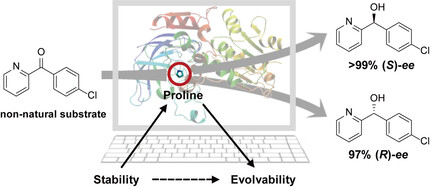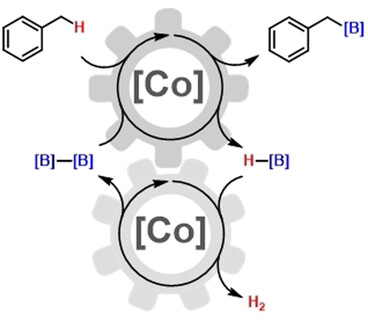Journal list menu
Export Citations
Download PDFs
Cover Pictures
Cover Picture: Tetraaryldiborane(4) Can Emit Dual Fluorescence Responding to the Structural Change around the B–B Bond (Angew. Chem. Int. Ed. 1/2022)
- First Published: 06 December 2021
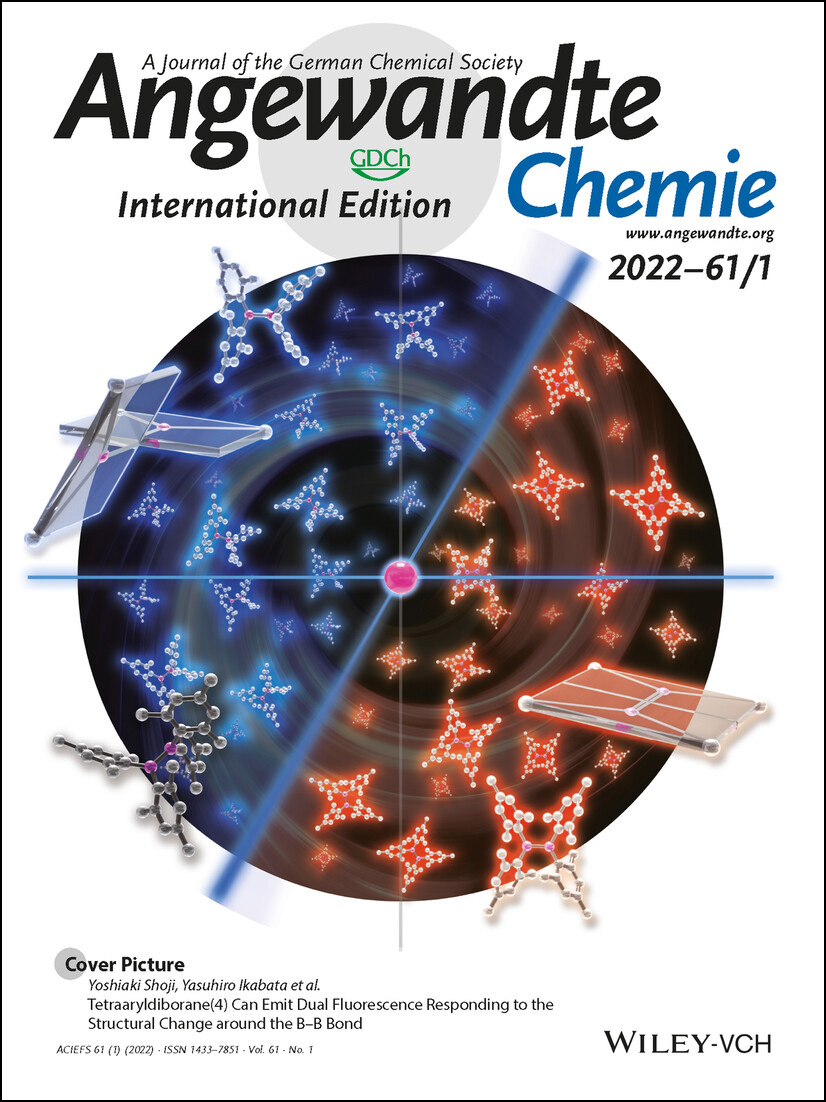
The blue/orange dual fluorescence properties of tetramesityldiborane(4) are reported by Yoshiaki Shoji, Yasuhiro Ikabata et al. in their Research Article (e202113549). Theoretical calculations showed that the diborane(4) in the S1 state adopts a twisted or planar geometry, which is responsible for the blue or orange fluorescence, respectively. The relative intensity of the dual fluorescence is sensitive to the viscosity of the medium, highlighting the potential of the diborane(4) as a ratiometric viscosity sensor.
Inside Cover: Continuous Porous Aromatic Framework Membranes with Modifiable Sites for Optimized Gas Separation (Angew. Chem. Int. Ed. 1/2022)
- First Published: 27 December 2021

Porous aromatic framework (PAF) membranes with modifiable channels were synthesized by Yuyang Tian, Guangshan Zhu, and co-workers in their Research Article (e202113682). The pore size and chemistry of the membranes were readily modified by ion exchange, resulting in suitable membranes for the separation of different gas mixtures. With Br− in the framework, the membrane exhibited a H2/N2 selectivity of 72.7 with a H2 permeance of 51844 gas permeation units (GPU). With BF4−, the membrane showed a CO2 permeance of 23058 GPU, and an optimized CO2/N2 selectivity of 60.0 was achieved.
Inside Back Cover: Concurrent Prebiotic Formation of Nucleoside-Amidophosphates and Nucleoside-Triphosphates Potentiates Transition from Abiotic to Biotic Polymerization (Angew. Chem. Int. Ed. 1/2022)
- First Published: 29 November 2021

Diamidophosphate enabled phosphorylation chemistry facilitates the synthesis of closely related nucleotides and nucleoside triphosphates that are compatible with abiotic oligomerization, and ribozyme-mediated polymerization and ligation processes. The one-pot protocol spans nucleosides, nucleotides, and oligonucleotides, implying that the progression from prebiotic chemistry to those conducive for emergence of life's biochemistry could be a more continuous process than previously assumed. Details are discussed in the Research Article by Ulrich F. Müller, Ramanarayanan Krishnamurthy, and co-workers (e202113625).
Back Cover: A Biomimetic Approach for Spatially Controlled Cell Membrane Engineering Using Fusogenic Spherical Nucleic Acid (Angew. Chem. Int. Ed. 1/2022)
- First Published: 06 December 2021
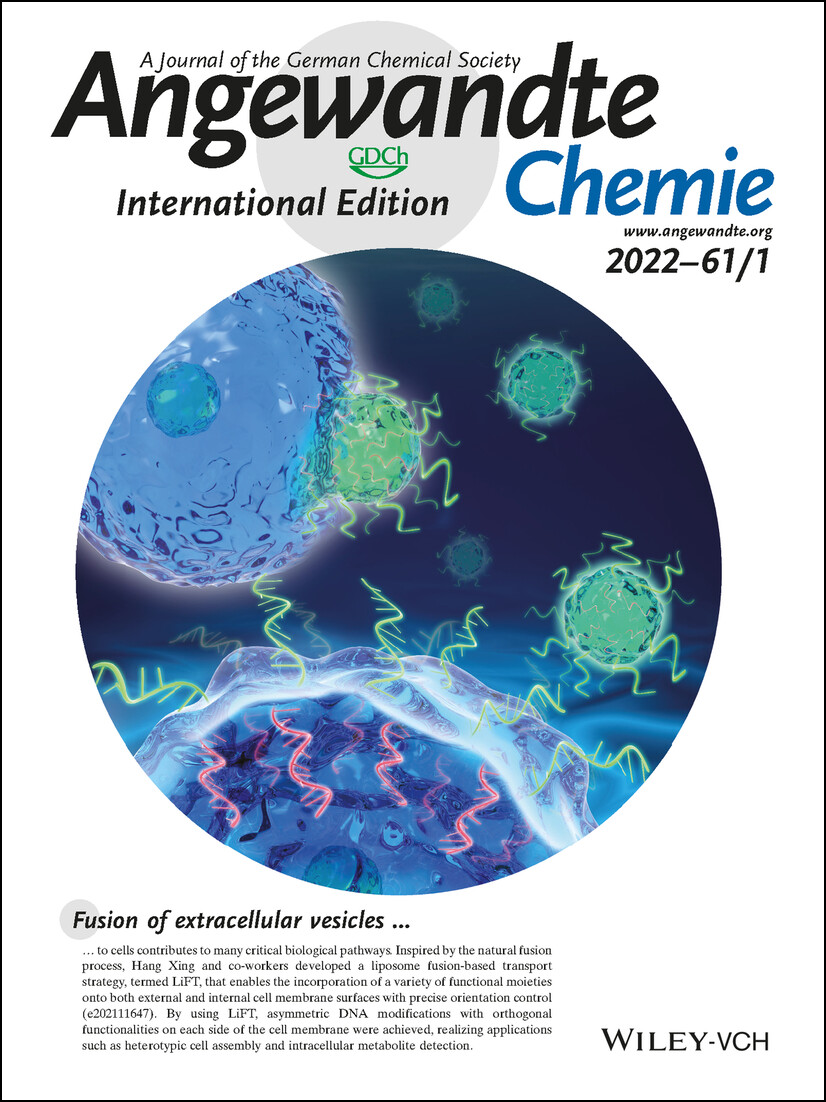
Fusion of extracellular vesicles to cells contributes to many critical biological pathways. Inspired by the natural fusion process, Hang Xing and co-workers developed a liposome fusion-based transport strategy, termed LiFT, that enables the incorporation of a variety of functional moieties onto both external and internal cell membrane surfaces with precise orientation control (e202111647). By using LiFT, asymmetric DNA modifications with orthogonal functionalities on each side of the cell membrane were achieved, realizing applications such as heterotypic cell assembly and intracellular metabolite detection.
Frontispiece
Frontispiece: Intrinsically Disordered Tardigrade Proteins Self-Assemble into Fibrous Gels in Response to Environmental Stress
- First Published: 27 December 2021

Proteins In their Communication (e202109961), Martin Blackledge et al. report the self-assembly of intrinsically disordered tardigrade proteins into fibrous gels in response to environmental stress.
Frontispiece: Conformational Adaptation of β-Peptide Foldamers for the Formation of Metal–Peptide Frameworks
- First Published: 27 December 2021

Foldamers In their Research Article (e202108364), Sunbum Kwon, Hee-Seung Lee et al. report on the conformational adaptation of β-peptide foldamers for the formation of metal–peptide frameworks.
Editorial
Angewandte Chemie Continues To Evolve into 2022
- First Published: 20 December 2021

In 2021, among other changes, Angewandte Chemie established a new governance structure with ten Advisory Editors and a redefined International Advisory Board (IAB) and introduced new article types. The journal will continue to evolve in 2022 and beyond, with five new IAB members and the move from the use of page numbers to eLocators as the first changes of the new year.
Graphical Abstract
Introducing …
Charles W. Machan
- First Published: 18 November 2021

The biggest challenge facing my generation of scientists is replacing 150 years of industrial chemistry with more efficient and environmentally friendly alternatives … My favorite science outreach activity is anything involving demonstration experiments …“ Find out more about Charles Machan in his Introducing … Profile.
Minireviews
All-Inorganic Perovskites
Organic Matrix Assisted Low-temperature Crystallization of Black Phase Inorganic Perovskites
- First Published: 07 September 2021

An organic matrix can assist the crystallization of all-organic perovskites at temperatures lower than the phase transition point of black phase CsPbX3 perovskite. This low-temperature crystallization takes place through the formation and decomposition of an intermediate state which is reminiscent of an organic–inorganic perovskite matrix.
Reviews
Water Electrolysis
Principles of Water Electrolysis and Recent Progress in Cobalt-, Nickel-, and Iron-Based Oxides for the Oxygen Evolution Reaction
- First Published: 17 June 2021
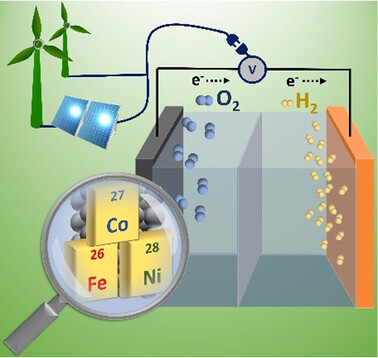
This Review describes the basic principles of water electrolysis, key aspects of the oxygen evolution reaction (OER), and significant criteria for the development of new catalysts. Recent advances in catalysts based on Co, Ni, and Fe oxides are described, and a brief perspective is given on green hydrogen production and the challenges of water electrolysis.
Ring-Opening Copolymerization
Heterocycle/Heteroallene Ring-Opening Copolymerization: Selective Catalysis Delivering Alternating Copolymers
- First Published: 20 May 2021

Ring-opening copolymerisation (ROCOP) is a powerful living polymerisation that yields numerous alternating copolymers with precisely placed heteroatoms in the polymer backbones. This Review summarizes the state-of-the-art of this important method, describes the principles of the catalysis, and illustrates the potential of the different monomer combinations and resulting polymers. Trends and future challenges of this approach and the resulting materials are highlighted.
Communications
Intrinsically Disordered Proteins | Hot Paper
Intrinsically Disordered Tardigrade Proteins Self-Assemble into Fibrous Gels in Response to Environmental Stress
- First Published: 09 November 2021
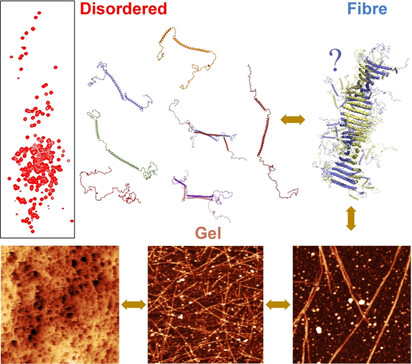
The conformational behaviour of an intrinsically disordered protein responsible for protecting tardigrades against extreme stress has been characterized. The protein assembles into fibres and fibrillar gels as a function of temperature and concentration. The disordered tails remain flexible within the gel cavities, which can encapsulate client proteins in their native state.
CO2 Reduction | Very Important Paper
Mediated Inner-Sphere Electron Transfer Induces Homogeneous Reduction of CO2 via Through-Space Electronic Conjugation
- First Published: 25 October 2021
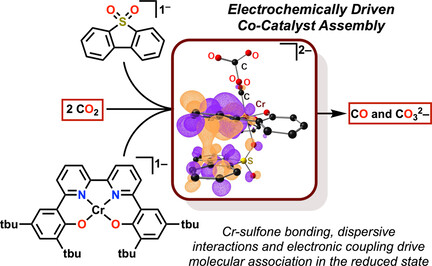
Through-space electronic conjugation between a redox mediator and molecular Cr complex enables emergent co-electrocatalytic activity for the electrochemical reduction of carbon dioxide to carbon monoxide. In the reduced forms, the aromatic portions interact through a combination of dispersion forces, π conjugation, and weak coordination of the sulfone to Cr.
Photochemistry
Solar Urea: Towards a Sustainable Fertilizer Industry
- First Published: 03 November 2021
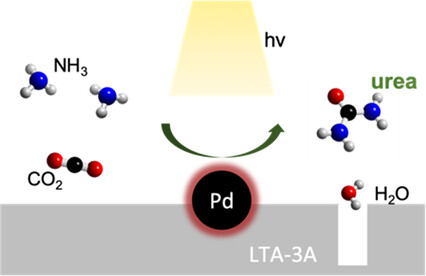
Direct urea synthesis from NH3 and CO2 was achieved over Pd/LTA-3A powered solely by solar energy. Pd nanoparticles serve the dual function of catalyzing the dissociation of NH3 and providing the photothermal driving force for reaction with CO2, while the absorption capacity of LTA-3A removes by-product H2O, shifting the equilibrium towards urea production.
Rhodium Catalysis
Synthesis of Functionalized Silsesquioxane Nanomaterials by Rhodium-Catalyzed Carbene Insertion into Si−H Bonds
- First Published: 25 October 2021
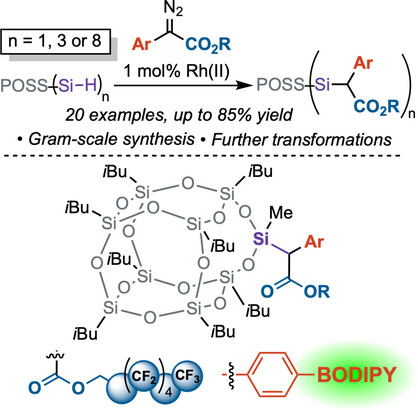
Carbene insertion into Si−H bonds of silsesquioxane silanes was accomplished using RhII catalysis and diazo compounds as carbene precursors. Silsesquioxanes with up to eight Si−H bonds were functionalized up to gram-scale. Diazo compounds with a fluorinated octyl group and BODIPY fluorophore were accessed to highlight the utility of diazo chemistry. Further transformations including a cross-coupling and ester deprotection are demonstrated.
Oligonucleotides | Hot Paper
Athermal, Chemically Triggered Release of RNA from Thioester Nucleic Acids
- First Published: 25 October 2021
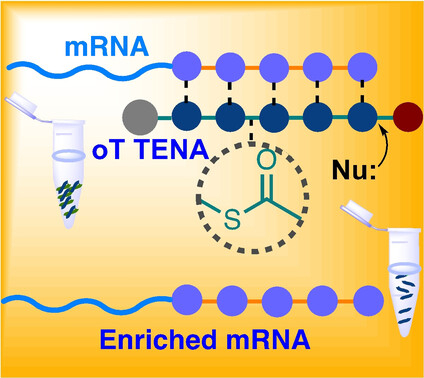
Thioester linked oligo(T) nucleic acids are utilized for an efficient enrichment of mRNA from total RNA under ambient temperature. The selective binding of uncharged oT TENA to the poly(A) tail of the mRNA and release via a self-immolative degradation of thioester backbone under ambient temperature were the key features that enabled this approach.
Main-Group Chemistry
Configurational Lability at Tetrahedral Phosphorus: syn/anti-Isomerization of a P-Stereogenic Phosphiranium Cation by Intramolecular Epimerization at Phosphorus
- First Published: 09 November 2021
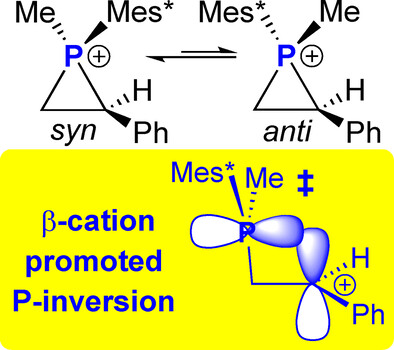
Tetrahedral carbon and analogous four-coordinate main-group compounds are configurationally stable, but we report intramolecular P-epimerization of chiral phosphiranium cations under mild conditions. How? In the proposed mechanism, P-C cleavage yields an intermediate pendant β-carbocation which promotes low-barrier pyramidal inversion at phosphorus, while hyperconjugative stabilization from a P-C σ-bond preserves the cation's C-chirality.
C−H Functionalization
Photocatalytic Sulfonylcarbocyclization of Alkynes Using SEt as a Traceless Directing Group: Access to Cyclopentenes and Indenes
- First Published: 07 November 2021

A photocatalytic sulfonylcarbocyclization of terminal alkynes using SEt as a traceless directing group is developed, providing a facile access to highly substituted cyclopentenes and indenes from readily available starting materials. It represents a new advance on anti-Baldwin 5-endo-trig radical cyclization of all-carbon systems, which may be valuable for the fast construction of five-membered carbocycles.
Synthetic Methods
Visible Light Induced Brønsted Acid Assisted Pd-Catalyzed Alkyl Heck Reaction of Diazo Compounds and N-Tosylhydrazones
- First Published: 27 October 2021

A mild visible light-induced palladium-catalyzed alkyl Heck reaction of diazo compounds and N-tosylhydrazones is reported. This method features Brønsted acid assisted generation of hybrid palladium C(sp3)-centered radical intermediate and broad reaction scope, highlighting the diverse applicability and the potential utility of this protocol in late-stage functionalization.
RNA Synthesis
Solid-Phase-Supported Chemoenzymatic Synthesis of a Light-Activatable tRNA Derivative
- First Published: 05 November 2021

Synthetic access to modified RNA is of high importance. Both the gold standard—chemical solid-phase synthesis—and enzymatic methods have limitations. The present study offers a best-of-both-worlds approach and enabled the synthesis of a tRNA derivative with four modifications. This approach is compatible with a whole toolbox of light-reactive and other modifications.
Asymmetric Catalysis
Enantioselective Synthesis of Chiral Carboxylic Acids from Alkynes and Formic Acid by Nickel-Catalyzed Cascade Reactions: Facile Synthesis of Profens
- First Published: 22 October 2021
Exocytosis
Vitamin D Inhibits the Early Aggregation of α-Synuclein and Modulates Exocytosis Revealed by Electrochemical Measurements
- First Published: 04 November 2021
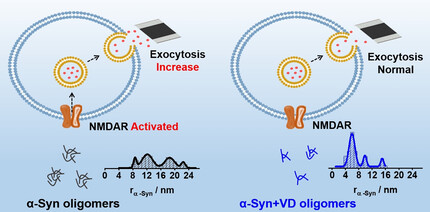
Electrochemical measurement of the early aggregation of α-Syn and exocytosis event of PC12 revealed a new neuroprotective role of VD that can inhibit the α-Syn monomers aggregation into α-Syn oligomers and modulate exocytosis. This research provides an efficient strategy for early treatment and prevention of the neurodegenerative diseases associated with α-Syn oligomers.
15th Century Paints
Connecting Rheological Properties and Molecular Dynamics of Egg-Tempera Paints based on Egg Yolk
- First Published: 23 November 2021
Bioorthogonal Catalysis
Truly-Biocompatible Gold Catalysis Enables Vivo-Orthogonal Intra-CNS Release of Anxiolytics
- First Published: 03 November 2021
Synthetic Methods
Accessing Unsymmetrically Linked Heterocycles through Stereoselective Palladium-Catalyzed Domino Cyclization
- First Published: 05 November 2021

Solving alkynes of problems with palladium. A palladium-catalyzed domino cyclization of alkyne-tethered carbamoyl chlorides and aryl iodides with alkyne-tethered aryl nucleophiles is reported. This methodology unsymmetrically links heterocycles along a tetrasubstituted olefin with >20:1 E/Z selectivity and up to 96 % yield.
Single Crystals
Multi-Stimuli-Induced Mechanical Bending and Reversible Fluorescence Switching in a Single Organic Crystal
- First Published: 22 November 2021
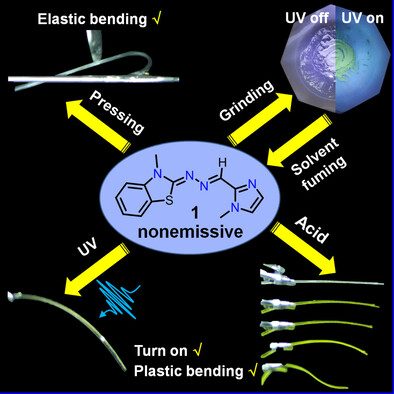
A slender single crystal based on azine exhibits controllable plastic bending and fluorescence enhancement upon UV light irradiation or acid vapor fuming, as well as elastic bending under external force and mechanoresponsive fluorescence. This is the first smart single crystal exhibiting fluorescence lit up upon bending triggered by UV light irradiation and exposure to acid.
Fluorescent Probes | Very Important Paper
Photocleavable Fluorescent Membrane Tension Probes: Fast Release with Spatiotemporal Control in Inner Leaflets of Plasma Membrane, Nuclear Envelope, and Secretory Pathway
- First Published: 04 November 2021
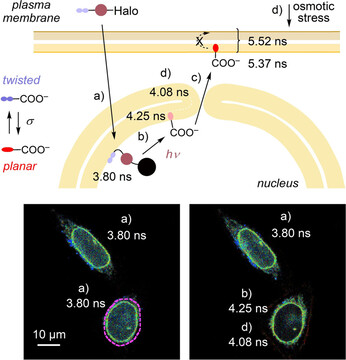
Open, dynamic, and elusive membrane motifs are labeled without chemical or physical interference to image their order and tension in living cells: Fast release with light from specific targets liberates the original small-molecule flipper probe in the innermost leaflet of the nuclear envelope, the inner leaflet of the plasma membrane, or along the secretory pathway to address current questions of biological significance.
Analytical Methods
Quantifying Intracellular Single Vesicular Catecholamine Concentration with Open Carbon Nanopipettes to Unveil the Effect of L-DOPA on Vesicular Structure
- First Published: 03 November 2021

Single vesicular catecholamine concentrations in the intracellular environment were calculated based on the narrowed distributions of vesicular content and size obtained with 100 nm open CNPs. We have shown that vesicular dense core size and content increase while catecholamine concentrations are essentially unchanged after exposure to L-DOPA.
Membranes
Layered Double Hydroxide-Assisted Fabrication of Prussian Blue Membranes for Precise Molecular Sieving
- First Published: 08 November 2021

For the first time, we prepared continuous polycrystalline Prussian blue (PB) membrane showing precise dye rejection and monovalent ion discrimination ability. The introduction of a calcined NiFe-CO3 layered double hydroxide buffer layer on the substrate was found to play a paramount role in the formation of PB membrane with desirable microstructure and performance.
Remote Functionalization | Hot Paper
Air-Stable PdI Dimer Enabled Remote Functionalization: Access to Fluorinated 1,1-Diaryl Alkanes with Unprecedented Speed
- First Published: 04 November 2021
Platinum Complexes | Hot Paper
Rigid Bridge-Confined Double-Decker Platinum(II) Complexes Towards High-Performance Red and Near-Infrared Electroluminescence
- First Published: 03 November 2021
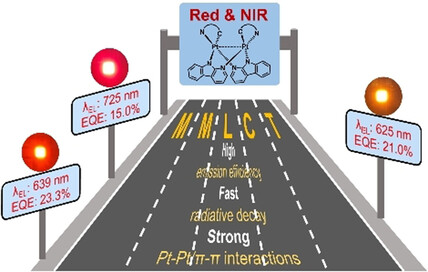
Strong intramolecular Pt⋅⋅⋅Pt/π–π interactions confined by rigid bridges lead to fast radiative decay and high-efficiency red and near-infrared (NIR) phosphorescence from triplet metal-metal-to-ligand charge transfer (3MMLCT) excited states. Together with short emission lifetimes, high-performance red and NIR organic light-emitting diodes (OLEDs) have been demonstrated.
Nanostructures
A Defective Nanotube Molecule of C552H496N24 with Pyridinic and Pyrrolic Nitrogen Atoms
- First Published: 02 November 2021
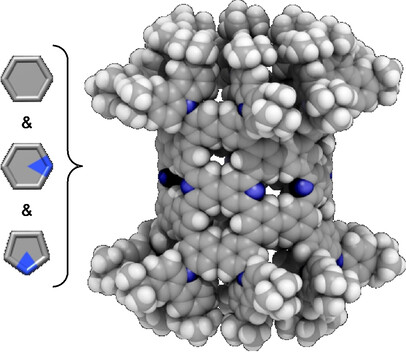
A gigantic molecule composed of 1072 atoms was designed and synthesized to install two types of nitrogen dopants in a defective nanotube molecule. Charge-transfer interactions originating from the pyridinic and pyrrolic nitrogen dopants were disclosed by solution-phase analyses, and 3-nm molecular structures and a unique helical assembly were revealed by crystallographic analyses.
Non-Covalent Interaction | Hot Paper
Stacked but not Stuck: Unveiling the Role of π→π* Interactions with the Help of the Benzofuran–Formaldehyde Complex
- First Published: 25 October 2021
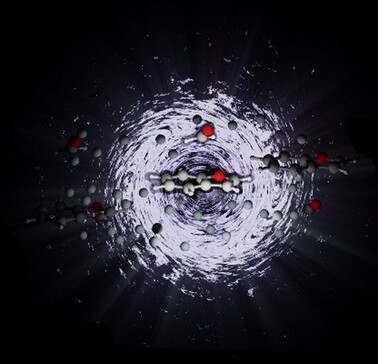
A π→π* interaction is discovered to be by far the main stabilizing contribution in the benzofuran–formaldehyde adduct, resulting in an interaction energy of −16.1 kJ mol−1. The characterization of eleven singly-substituted isotopologues allowed for an accurate semi-experimental equilibrium structure determination, which points out a carbon–carbon distance (3.2257±0.0006 Å) between formaldehyde and benzofuran shorter than the sum of the carbon van der Waals radii.
Research Articles
Metal–Peptide Frameworks | Hot Paper
Conformational Adaptation of β-Peptide Foldamers for the Formation of Metal–Peptide Frameworks
- First Published: 01 September 2021

Ag+-coordination-mediated assembly of β-peptide foldamers led to the formation of distinctive metal–peptide frameworks with unique interwoven topologies. Formation of the network structures was accompanied by unusual conformational distortions of the foldamer ligands. These new metal–peptide frameworks built from modular foldamers may provide useful molecular platforms for further structural evolution and mechanistic investigation.
Protein Characterization | Hot Paper
Selective 1Hα NMR Methods Reveal Functionally Relevant Proline cis/trans Isomers in Intrinsically Disordered Proteins: Characterization of Minor Forms, Effects of Phosphorylation, and Occurrence in Proteome
- First Published: 29 September 2021
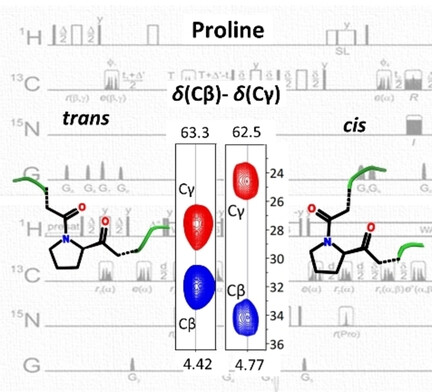
Selective 1Hα-detected NMR methods were developed to study cis/trans isomerization in intrinsically disordered proteins (IDPs) under physiological conditions. Using p53TAD1–60 proline (Pro) isomers with low population were identified and the variation of the cis/trans-Pro equilibrium was monitored upon phosphorylation. Statistical analysis was performed to investigate how the amino acid type influences Pro isomer formation.
Homogeneous Catalysis | Hot Paper
Selective Approaches to α- and β-Arylated Vinyl Ethers
- First Published: 10 November 2021

Benzyl vinyl ethers have selectively been arylated at either α or β position by fine-tuned Heck-type palladium catalyses. In contrast to previous protocols, no excess of arylating reagent or substrate chelation is necessary. For achieving good yields and high α/β-selectivities various factors determining the catalytic system had to be optimized. The results of DFT computational studies correlate selectivity with electron richness on the Pd center.
Heterocycles
An N-Trifluoromethylation/Cyclization Strategy for Accessing Diverse N-Trifluoromethyl Azoles from Nitriles and 1,3-Dipoles
- First Published: 26 October 2021
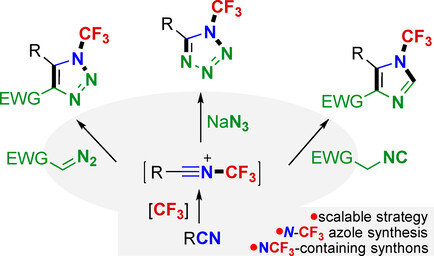
A scalable N-trifluoromethylative cyclization strategy is reported to construct N-CF3 tetrazoles/imidazoles/1,2,3-triazoles. N-CF3 nitrilium derivatives are obtained via the N-trifluoromethylation of nitriles and well used as NCF3-containing synthons in 1,3-dipolar cyclizations for the first time. A generic platform for accessing diverse N-CF3 azoles is thus provided.
Asymmetric Synthesis
Enantioselective Synthesis of Silicon-Stereogenic Monohydrosilanes by Rhodium-Catalyzed Intramolecular Hydrosilylation
- First Published: 03 November 2021

An intramolecular hydrosilylation strategy was developed for the asymmetric synthesis of chiral monohydrosilanes. This protocol is suitable for the synthesis of dihydrobenzosilole-, tetrahydrobenzosiline- and oxatetrahydrobenzosiline-based monohydrosilanes with excellent diastereo-, regio-, and enantioselectivities. Notably, the catalyst loading could be reduced to 0.1 mol %.
C−H Borylation | Hot Paper
Metal-Free Phosphorus-Directed Borylation of C(sp2)−H Bonds
- First Published: 31 October 2021
Catenanes
Macrocycle Dynamics in a Branched [8]Catenane Controlled by Three Different Stimuli in Three Different Regions
- First Published: 22 October 2021
C-Nucleosides
Chemoselective and Diastereoselective Synthesis of C-Aryl Nucleoside Analogues by Nickel-Catalyzed Cross-Coupling of Furanosyl Acetates with Aryl Iodides
- First Published: 18 October 2021

The facile synthesis of C-aryl nucleoside analogues from readily available furanose acetates and aryl iodides is disclosed. This nickel-catalyzed cross-electrophile coupling showed good functional-group compatibility and excellent β-selectivity. The high chemoselectivity with respect to aryl iodides enabled the efficient preparation of a variety of C-aryl halide furanosides suitable for various post-functionalization reactions.
Gold Catalysis
Divergent and Modular Synthesis of Terpenoid Scaffolds via a AuI Catalyzed One-Pot Cascade
- First Published: 29 October 2021
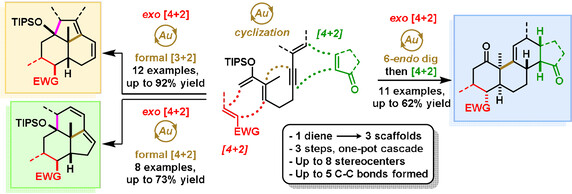
A one-pot sequence involving an exo-Diels–Alder reaction followed by a Lewis acid gold(I) catalyzed cyclization has allowed access to three complex polycyclic scaffolds. Structural diversity is obtained by varying solvent and the ligand of the gold(I) catalyst. An additional Diels–Alder step generates tetracyclic cores possessing up to 5 stereocenters.
Biocatalysis
Unlocking the Stereoselectivity and Substrate Acceptance of Enzymes: Proline-Induced Loop Engineering Test
- First Published: 17 October 2021
C−H Activation
Selective Benzylic CH-Borylations by Tandem Cobalt Catalysis
- First Published: 01 October 2021
Enzyme Cascades
Installing a Green Engine To Drive an Enzyme Cascade: A Light-Powered In Vitro Biosystem for Poly(3-hydroxybutyrate) Synthesis
- First Published: 18 October 2021
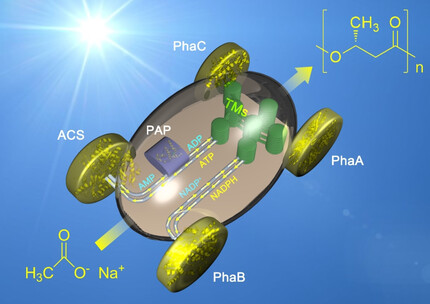
Thylakoid membranes were introduced into an in vitro biosystem for the synthesis of polyhydroxybutyrate to enable the conversion of light energy into biological energy through the regeneration of NADPH and ATP (see picture). The use of thylakoid membranes as a green engine in this way is a promising strategy for light-powered cell-free biomanufacturing.
Enzyme Catalysis | Hot Paper
Structural and Molecular Basis of the Catalytic Mechanism of Geranyl Pyrophosphate C6-Methyltransferase: Creation of an Unprecedented Farnesyl Pyrophosphate C6-Methyltransferase
- First Published: 09 October 2021

The structures of a geranyl pyrophosphate (GPP) C6-methyltransferase, BezA, and its complex with S-adenosyl homocysteine were solved by X-ray crystallography. Further analysis based on site-directed mutagenesis and computational calculations provided the molecular basis of the methylation reaction. Furthermore, an unprecedented farnesyl pyrophosphate C6-methyltransferase was created by introducing a W210A substitution.
Artificial Photosynthesis
Energy Band Alignment and Redox-Active Sites in Metalloporphyrin-Spaced Metal-Catechol Frameworks for Enhanced CO2 Photoreduction
- First Published: 15 October 2021
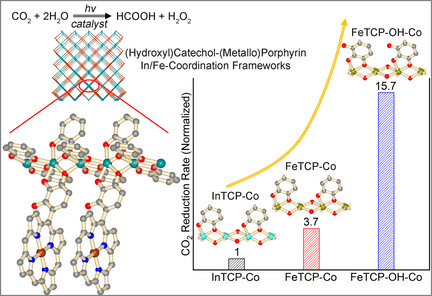
A series of hydro-stable metalloporphyrin-bridged metal-phenate frameworks are constructed, which exhibit artificial photosynthetic activity under visible-light irradiation without photosensitizer or sacrificial agent. Activity is boosted by substitution of the Fe-oxo chain for an In-oxo chain, and further enhanced by addition of the uncoordinated hydroxyl groups of catechol into the scaffold.
Cell Membrane Engineering | Very Important Paper
A Biomimetic Approach for Spatially Controlled Cell Membrane Engineering Using Fusogenic Spherical Nucleic Acid
- First Published: 12 October 2021
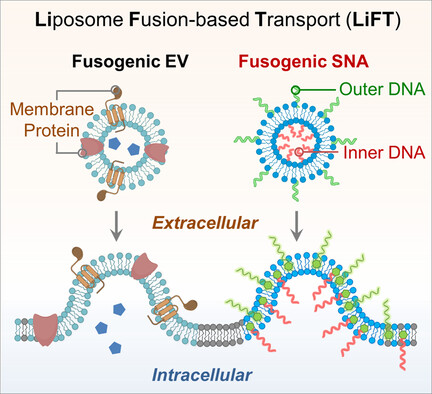
Inspired by the natural extracellular vesicle-cell fusion process, we introduced the fusogenic spherical nucleic acid (fuso-SNA) to achieve spatially controlled cell membrane engineering with DNA by using a liposome fusion-based transport (LiFT) approach. We demonstrated asymmetric DNA modifications on the cell membrane with orthogonal functionalities on each side, realizing applications such as heterotypic cell assembly and intracellular metabolites detection.
Chiral Alkenes | Very Important Paper
Rhodium-Catalyzed Atroposelective Access to Axially Chiral Olefins via C−H Bond Activation and Directing Group Migration
- First Published: 22 October 2021
Luminescent Probes
Enhancing Dye-Triplet-Sensitized Upconversion Emission Through the Heavy-Atom Effect in CsLu2F7:Yb/Er Nanoprobes
- First Published: 22 October 2021

A new class of upconversion (UC) nanocrystals of CsLu2F7:Yb/Er are developed to achieve efficient UC through triplet sensitization of NIR dye IR808, resulting in a 1309-fold enhancement in UC luminescence intensity and a more than 180-fold improvement of the absolute UC quantum yield over bare counterparts. Sensitive detection of intracellular ClO− is demonstrated by virtue of the 808-nm/980-nm dual excited ratiometric UC luminescence.
Full-Color Emission
Density-Dependent Emission Colors from a Conformation-Switching Chromophore in Polyurethanes
- First Published: 03 November 2021
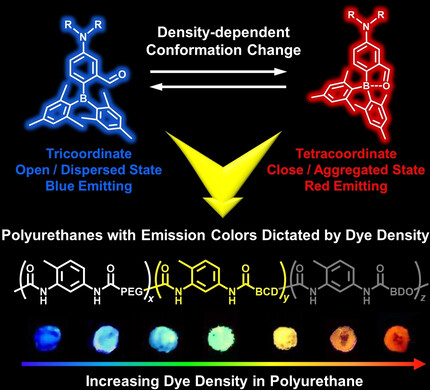
Full-color emission is achieved from a single fluorescent component by incorporating it into polyurethane matrices. Facilitated by the chemical structure of polyurethanes, the emission color could be modulated from blue to red by simply tuning the density of the chromophores, via either synthetic or physical approaches.
Layered Double Hydroxides
Mo3S132− Intercalated Layered Double Hydroxide: Highly Selective Removal of Heavy Metals and Simultaneous Reduction of Ag+ Ions to Metallic Ag0 Ribbons
- First Published: 28 October 2021
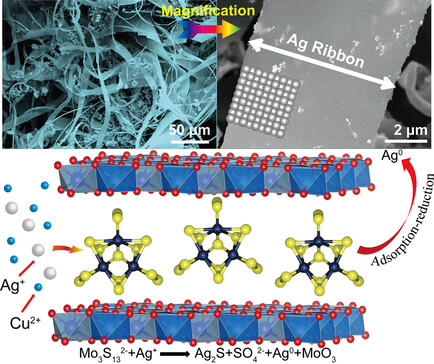
Intercalation of Mo3S132− into MgAl-layered double hydroxide (LDH) gives a new material, Mo3S13-LDH, which exhibits enormous adsorption capacities of noble metal silver (qmAg=1073 mg g−1) and toxic Hg2+ (qmHg=594 mg g−1) as well as high uptake selectivity for Ag+ and Cu2+. Both S22− and Mo4+ in Mo3S13-LDH contribute to the reduction of Ag+ to metallic Ag0.
Synthetic Methods | Hot Paper
Photoinitiated anti-Hydropentafluorosulfanylation of Terminal Alkynes
- First Published: 29 October 2021
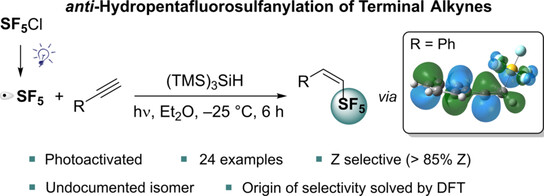
The direct synthesis of new (Z)-(1-alken-1-yl)pentafluoro-λ6-sulfanes was performed via the photoinitiated anti-hydropentafluorosulfanylation of terminal alkynes. The reaction of SF5Cl with 24 substrates in the presence of (TMS)3SiH as a H-atom donor gave access to the undocumented Z-isomer. The origins of this unusual selectivity were investigated by DFT calculations, which provide a better understanding of the geometry and reactivity of SF5-substituted vinylic radicals.
Helical Chirality
Five-Fold Symmetric Pentaindolo- and Pentakis(benzoindolo)Corannulenes: Unique Structural Dynamics Derived from the Combination of Helical and Bowl Inversions
- First Published: 04 November 2021
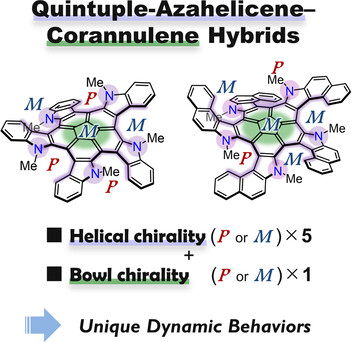
Peripherally π-extended corannulenes with five azahelicene units were prepared and their structural dynamics were studied experimentally and theoretically. This motif contains many conformational isomers owing to the helical and bowl chiralities. The interconversion networks were explored by using GRRM17 program, which revealed that the co-existing corannulene and azahelicene moieties lower the activation energy barriers for some isomerization processes.
Acenoacenes
Synthesis, Aromaticity, and Application of peri-Pentacenopentacene: Localized Representation of Benzenoid Aromatic Compounds
- First Published: 02 November 2021
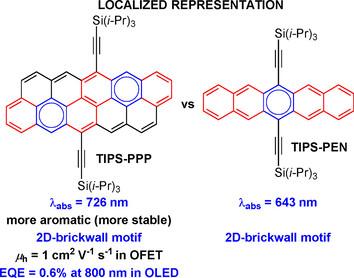
Acenes and peri-acenoacenes should be seen as π-conjugated systems containing one and two localized aromatic sextets, respectively, flanked with ortho-fused diene fragments. The vertical extension of TIPS-PEN, TIPS-PPP, has been prepared from a dione precursor and absorbs at longer wavelengths, is 16 times more stable, exhibits a 2D brickwall motif in crystals with stronger π–π interactions and a smaller reorganization energy.
Interfaces | Hot Paper
Active Exsolved Metal–Oxide Interfaces in Porous Single-Crystalline Ceria Monoliths for Efficient and Durable CH4/CO2 Reforming
- First Published: 21 October 2021
Aryne Chemistry
The Aryne Phosphate Reaction
- First Published: 02 November 2021

The ability of phosphates to act as efficient arynophiles is demonstrated. The resulting aryne phosphate reaction is a versatile tool for arene phosphorylation or phosphate arylation. A broad scope of variously arylated phosphate products is culminating in novel nucleotide analogues and a benchmarking octaphosphorylation.
Main Group Chemistry | Very Important Paper
Tetraaryldiborane(4) Can Emit Dual Fluorescence Responding to the Structural Change around the B–B Bond
- First Published: 22 October 2021
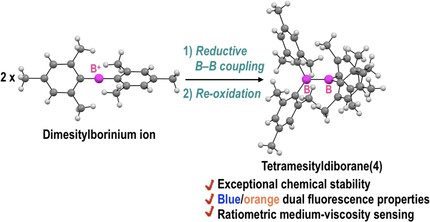
Newly synthesized tetramesityldiborane(4) shows exceptional chemical stability and blue/orange dual fluorescence capability associated with the B−B bond rotation in the excited state. The relative intensity of the dual fluorescence is sensitive to the viscosity of the medium, highlighting the potential of this diborane(4) as a ratiometric viscosity sensor.
Donor–Acceptor Systems
Macrocyclic Donor–Acceptor Dyads Composed of a Perylene Bisimide Dye Surrounded by Oligothiophene Bridges
- First Published: 20 October 2021

The synthesis and properties of a perylene bisimide dye bridged by one or two quinquethiophene units are described. The compounds show panchromatic light absorption in the UV/Vis spectrum, multiple reversible redox processes, and a highly efficient charge separation by photoinduced electron transfer.
DNA | Very Important Paper
Concurrent Prebiotic Formation of Nucleoside-Amidophosphates and Nucleoside-Triphosphates Potentiates Transition from Abiotic to Biotic Polymerization
- First Published: 04 November 2021

The DAP mediated prebiotic phosphorylation of nucleosides/nucleotides/oligonucleotides produces a spectrum of the corresponding mono-, di-, and tri(amido)phosphorylated derivatives which are substrates for both prebiotic-oligomerization and biotic-polymerization/ligation. The compatibility of the phosphorylation and activation chemistry across a broad spectrum of (oligo)nucleos(t)ide structures suggests a smoother transition from chemistry to biology.
Photoreactions
Visible-Light-Induced C4-Selective Functionalization of Pyridinium Salts with Cyclopropanols
- First Published: 03 November 2021

Visible-light-induced β-carbonyl alkylation of pyridines was developed by employing various cyclopropanols and N-amidopyridinium salts under mild conditions. This method provides an effective tool for the synthesis of valuable β-pyridyl-functionalized carbonyl frameworks with excellent C4 selectivity and the late-stage functionalization of complex and medicinally relevant molecules.
Microporous Materials | Hot Paper
Continuous Porous Aromatic Framework Membranes with Modifiable Sites for Optimized Gas Separation
- First Published: 23 October 2021
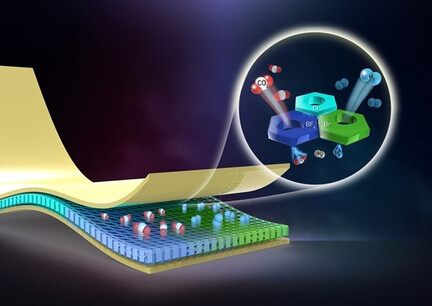
Porous aromatic frameworks (PAFs) with stable carbon–carbon linkages and chemically modifiable pores were shaped into continuous membranes, which are capable of separating industrially valuable gas mixtures, including H2/N2 and CO2/N2. With modulation of the pore structure or chemical environment, the separation performance of continuous PAF membranes exceeded their corresponding Robeson's upper bounds.
Polymer Networks | Very Important Paper
Calix[4]pyrrole-based Crosslinked Polymer Networks for Highly Effective Iodine Adsorption from Water
- First Published: 08 November 2021
![Calix[4]pyrrole-based Crosslinked Polymer Networks for Highly Effective Iodine Adsorption from Water](/cms/asset/1d00f9c2-6347-4f86-90d3-2b97f9817435/anie202113724-toc-0001-m.jpg)
A series of calix[4]pyrrole-based crosslinked polymer networks was synthesized via Sonogashira–Hagihara polycondensation. One system, C[4]P-BTP, was found to be highly effective for iodine capture from water with an uptake capacity of 3.24 g g−1 and quick kinetics (kobs=7.814 g g−1 min−1). Flow-through adsorption experiments revealed that C[4]P-BTP was able to remove 93.2 % of iodine from an aqueous phase with a flow rate of 1 mL min−1.
CO2 Reduction | Hot Paper
Maximizing Electroactive Sites in a Three-Dimensional Covalent Organic Framework for Significantly Improved Carbon Dioxide Reduction Electrocatalysis
- First Published: 30 October 2021
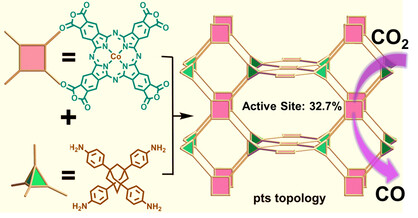
3D imide-bonded covalent organic framework (COF) composed of cobalt-phthalocyanine subunits has been prepared and used in CO2 reduction reaction electrocatalysis, showing the high CO2-to-CO conversion Faradaic efficiency. In particular, the active electrocatalytic centers and current density (jCO) of this 3D COF have been significantly improved in comparison to that of the 2D COF electrocatalyst with the same phthalocyanine subunits.
Drug Design | Very Important Paper
Druggable Allosteric Sites in β-Propeller Lectins
- First Published: 29 October 2021
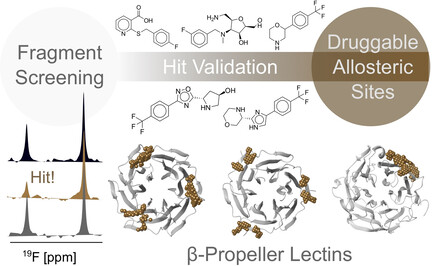
Drug-like inhibitors for bacterial carbohydrate-binding proteins called lectins are challenging. Computational and experimental analyses (NMR and SPR) of related β-propeller lectins from Burkholderia ambifaria (BambL), Ralstonia solanacearum (RSL), and Aspergillus fumigatus (AFL) identified druggable secondary pockets, which will support the design of allosteric inhibitors as new therapeutics against antibiotic-resistant pathogens.
Protein Engineering
Tumor-Cell-Specific Targeting of Ibrutinib: Introducing Electrostatic Antibody-Inhibitor Conjugates (AiCs)
- First Published: 02 November 2021

The synthesis, in vitro and in vivo evaluation of a vesicular ibrutinib-Cy3.5 hosting nanocarrier is reported. In vivo, it shows a significant enrichment of the drug in xenograft lymphoma tumors in immune-compromised mice and gave a significantly better response at much lower dosage than the original untargeted drug.




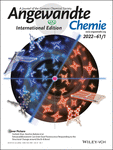





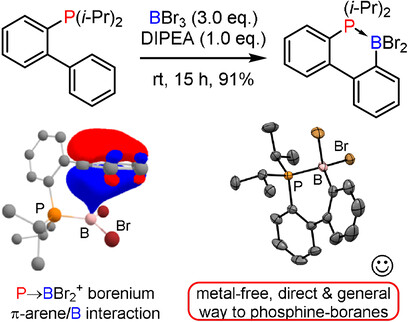
![Macrocycle Dynamics in a Branched [8]Catenane Controlled by Three Different Stimuli in Three Different Regions](/cms/asset/ffc7eca9-dcc8-4f92-b853-c5904b3f3644/anie202110200-toc-0001-m.jpg)
